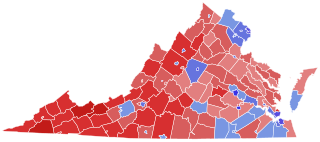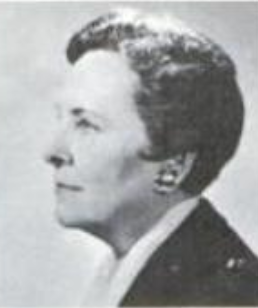Baker v. Carr, 369 U.S. 186 (1962), was a landmark United States Supreme Court case in which the Court held that redistricting qualifies as a justiciable question under the Fourteenth Amendment, thus enabling federal courts to hear Fourteenth Amendment-based redistricting cases. The court summarized its Baker holding in a later decision as follows: "Equal Protection Clause of the Fourteenth Amendment limits the authority of a State Legislature in designing the geographical districts from which representatives are chosen either for the State Legislature or for the Federal House of Representatives.". The court had previously held in Gomillion v. Lightfoot that districting claims over racial discrimination could be brought under the Fifteenth Amendment.

The Virginia General Assembly is the legislative body of the Commonwealth of Virginia, and the oldest continuous law-making body in the New World, established on July 30, 1619. The General Assembly is a bicameral body consisting of a lower house, the Virginia House of Delegates, with 100 members, and an upper house, the Senate of Virginia, with 40 members. Combined, the General Assembly consists of 140 elected representatives from an equal number of constituent districts across the commonwealth. The House of Delegates is presided over by the Speaker of the House, while the Senate is presided over by the Lieutenant Governor of Virginia. The House and Senate each elect a clerk and sergeant-at-arms. The Senate of Virginia's clerk is known as the "Clerk of the Senate".

Northern Virginia, locally referred to as NOVA or NoVA, comprises several counties and independent cities in the Commonwealth of Virginia in the United States. It is a widespread region radiating westward and southward from Washington, D.C. With 3,197,076 people according to the 2020 Census, it is the most populous region of Virginia and the Washington metropolitan area.
Reynolds v. Sims, 377 U.S. 533 (1964), was a United States Supreme Court case in which the Court ruled that the electoral districts of state legislative chambers must be roughly equal in population. Along with Baker v. Carr (1962) and Wesberry v. Sanders (1964), it was part of a series of Warren Court cases that applied the principle of "one person, one vote" to U.S. legislative bodies.
Congressional districts, also known as electoral districts, legislative districts, wards and electorates in other nations, are divisions of a larger administrative region that represent the population of a region in the larger congressional body. Notably, in Australia, electoral districts are referred to as "electorates" or "seats"; in Canada these are called "constituencies" or more informally "ridings". Countries with congressional districts include the United States, the Philippines and Japan.
At-large is a description for members of a governing body who are elected or appointed to represent a whole membership or population, rather than a subset. In multi-hierarchical bodies the term rarely extends to a tier beneath the highest division. A contrast is implied, with certain electoral districts or narrower divisions. It can be given to the associated territory, if any, to denote its undivided nature, in a specific context. Unambiguous synonymous are the prefixes of cross-, all- or whole-, such as cross-membership, or all-state.
Avery v. Midland County, 390 U.S. 474 (1968), is a United States Supreme Court case that ruled that local government districts had to be roughly equal in population.
Texas has had at-large congressional seats at various times in its history. It was often the case when the state received new congressional seats as a result of reapportionment, that it would have a representative elected from an at-large seat, voted on by all voters in the state. This enabled the legislature, which was dominated by legislators from rural districts, to postpone re-districting that would reduce their power by apportioning districts to recognize the increased population and economic power of the developing major cities.
Colegrove v. Green, 328 U.S. 549 (1946), was a United States Supreme Court case. Writing for a 4–3 plurality, Justice Felix Frankfurter held that the federal judiciary had no power to interfere with malapportioned Congressional districts. The Court held that the Guarantee Clause in Article I, section IV of the U.S. Constitution left to the legislature of each state the authority to establish the time, place, and manner of holding elections for Congressional Representatives, and that only Congress could determine whether individual state legislatures had fulfilled their responsibility to secure fair representation for citizens.

Virginia's 31st Senate district is one of 40 districts in the Senate of Virginia. It has been represented by Democrat Barbara Favola since 2012, succeeding retiring fellow Democrat Mary Margaret Whipple.
Karcher v. Daggett, 462 U.S. 725 (1983), was a United States Supreme Court case involving the legality of redistricting, and possibly gerrymandering, in the state of New Jersey.

The 174th New York State Legislature, consisting of the New York State Senate and the New York State Assembly, met from January 9, 1963, to December 30, 1964, during the fifth and sixth years of Nelson Rockefeller's governorship, in Albany.

The 2017 Virginia lieutenant gubernatorial election was held on November 7, 2017. After the party primary elections were held, the major party nominees were Jill Vogel (Republican) and Justin Fairfax (Democrat). The incumbent Lieutenant Governor, Democrat Ralph Northam, declined to run for re-election in order to run for Governor. In the general election on November 7, 2017, Democratic nominee Justin Fairfax defeated Republican state Senator Jill Vogel to become the 41st Lieutenant Governor of Virginia.
Charles Harrison Mann Jr. was a Virginia lawyer who served as a Democratic member of the Virginia House of Delegates representing Arlington, Virginia.
John Amadeus Kiernan Donovan was an attorney, author, dog breeder and Virginia Democratic politician who served part-time in the Virginia Senate representing Fairfax County from 1952 until 1964.

Kathryn Haesler Stone was an American teacher, housewife, author, civic activist and Democratic politician who represented Arlington, Virginia part-time in the Virginia House of Delegates from 1954 to 1966.
John Cobourn Webb was an American lawyer and Democratic politician who represented Falls Church and Fairfax, Virginia part-time in the Virginia House of Delegates from 1954 to 1966.
Dorothy Shoemaker McDiarmid was a teacher, real estate broker, Quaker activist, and Virginia legislator for nearly 26 years.
The Commission on Education, known as the Perrow Commission after its chairman, Virginia state senator Mosby Perrow Jr., was a 40-member commission established by Governor of Virginia J. Lindsay Almond on February 5, 1959 after the Virginia Supreme Court in Harrison v. Day and a three-judge federal court in James v. Almond had both struck down significant portions of the Stanley Plan, which had implemented Massive Resistance to the U.S. Supreme Court decisions in Brown v. Board of Education issued on May 17, 1954 and May 31, 1955. Four legislators were appointed from each of the ten U.S. Congressional districts in Virginia. Compared to the Gray Commission that Governor Thomas B. Stanley had appointed five years previously, Perrow Commission included more representatives from cities, northern and Western Virginia, although many members served on both commissions.






